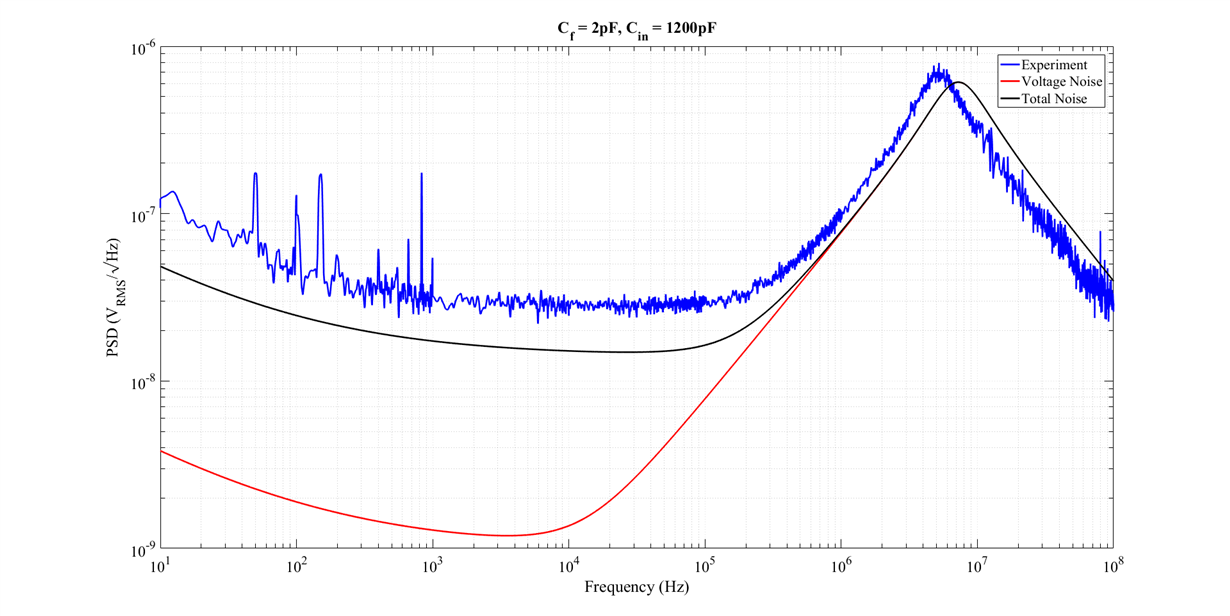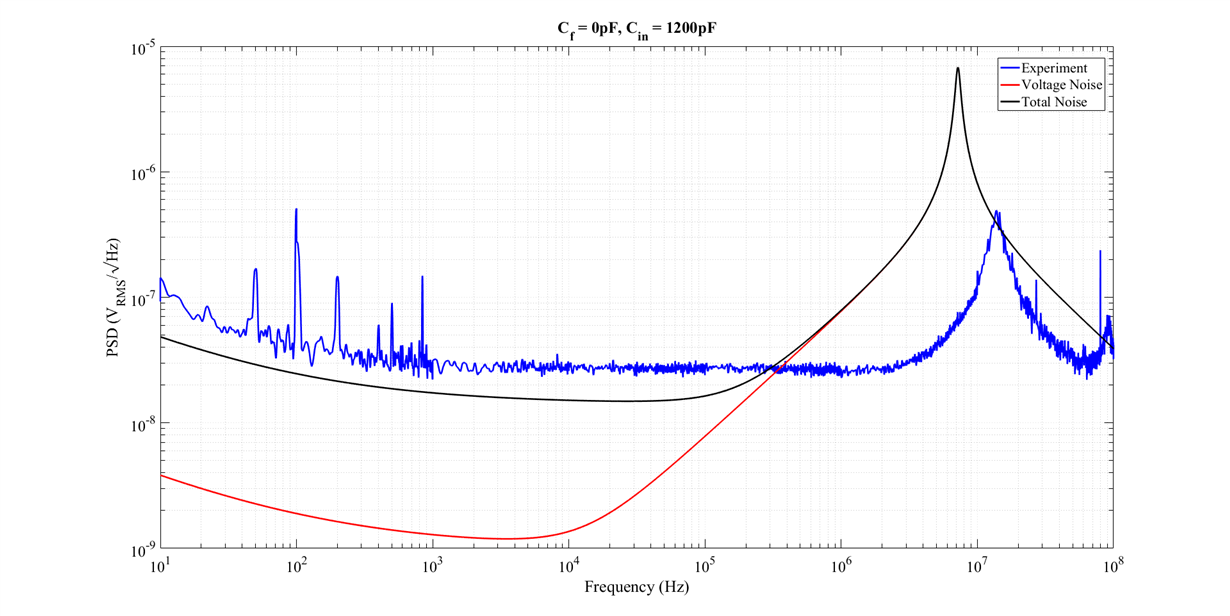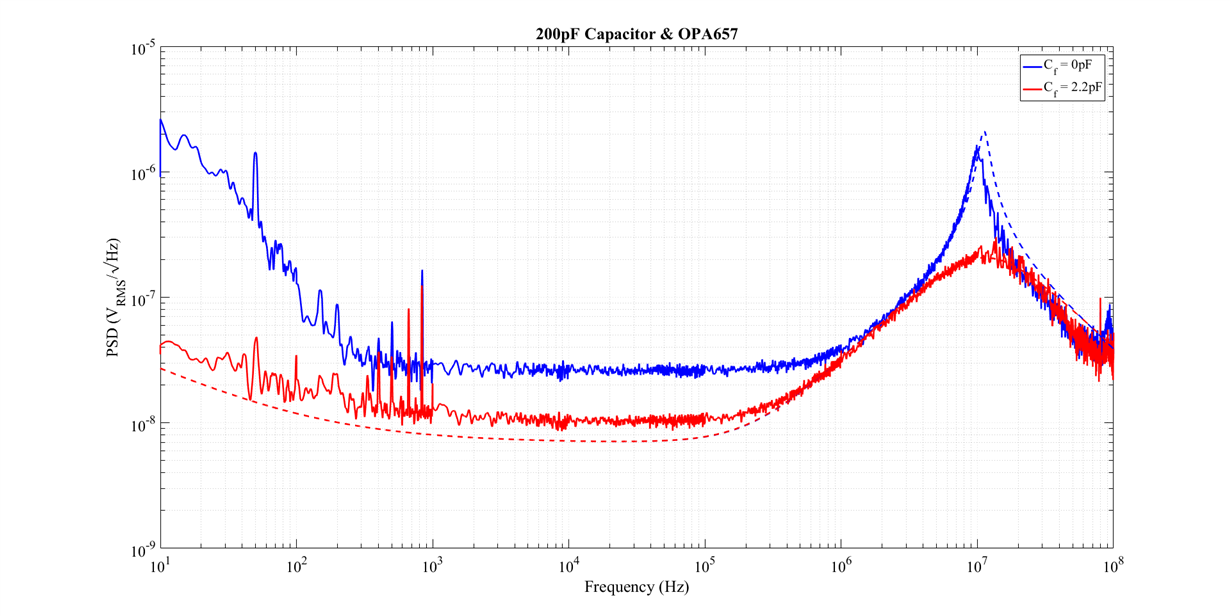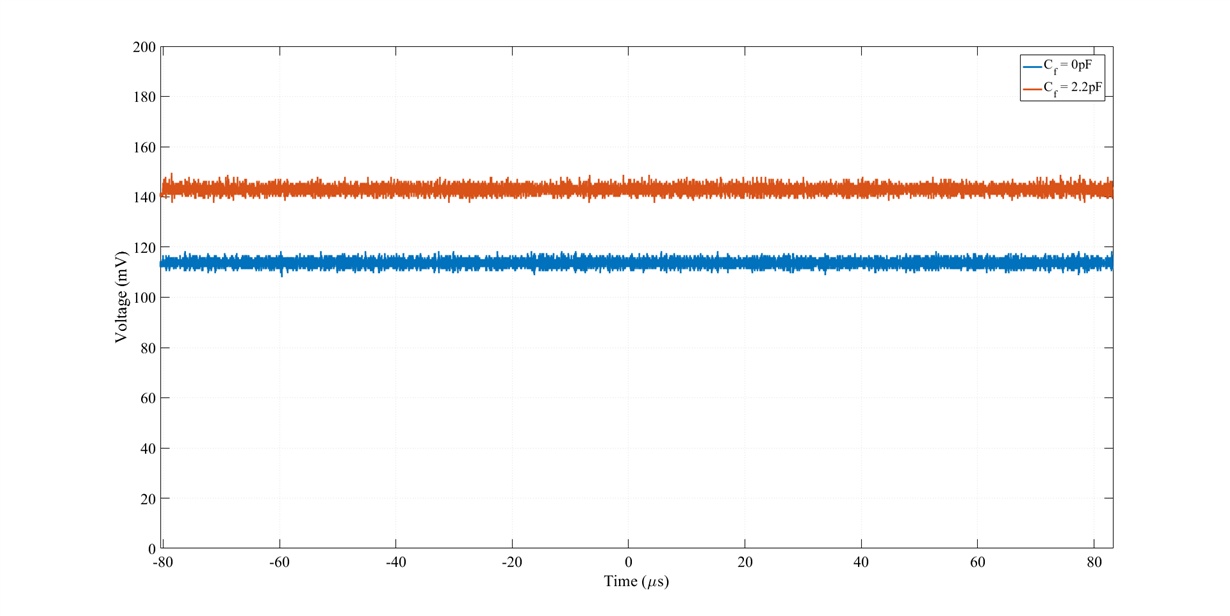Other Parts Discussed in Thread: OPA820, LMH6629, OPA657
I am working on a low noise transimpedance amplifier (TIA) for the detection of weak optical signals. The aim is to achieve a 10MHz bandwidth with a white voltage noise floor of 10-20nV/rtHz. I am using the FGA21 photodiode and the OPA847 Op-Amp with a 10kohm feedback resistor operating in photoconductive mode.
Key specifications include:
- Gain banwidth product: GBW = 3.9GHz
- Input voltage noise: e_n = 0.85nV/rtHz
- Input current noise: i_n = 2.5pA/rtHz
- photodiode capacitance: C_d = 100pF @ 3V bias
The PCB design followed many of the suggested layout techniques (minimising track length, passing feedback components under the op-amp, isolating sensitive tracks from the ground plane etc.). Additionally, the voltage supply was heavily filtered using decoupling capacitors and the OPA820 Op-Amp was used to buffer the output.
Two noise spectra were taken, one where the feedback capacitance was left open and one where it was set to 1.5pF:

The dashed lines represent the corresponding theoretical noise curves. Clearly the capacitor causes the noise peaking to broaden and shift in frequency, this contradicts theory which suggests that a feedback capacitor dampens the transimpedance gain and reduces high frequency noise.
So I am wondering if anyone else has come across this issue before or can understand how the addition of a single capacitor causes a large disparity between theory and experiment?






